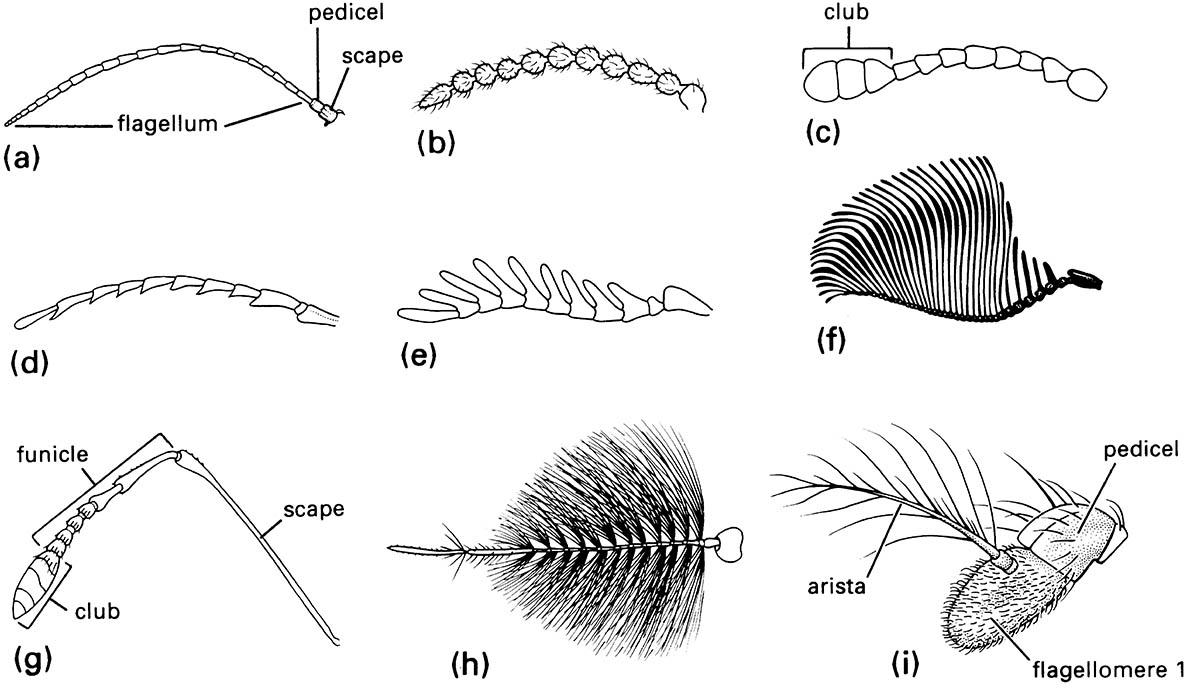2.3.2. Cephalic sensory structures
The most obvious sensory structures of insects are on the head. Most adults and many nymphs have com- pound eyes dorsolaterally on head segment 4 and three ocelli on the vertex of the head. The median, or anterior, ocellus lies on segment 1 and is formed from a fused pair; the two lateral ocelli are on segment 3. The only visual structures of larval insects are stemmata, or simple eyes, positioned laterally on the head, either singly or in clusters. The structure and functioning of these three types of visual organs are described in detail in section 4.4.
Antennae are mobile, segmented, paired appendages. Primitively, they appear to be eight-segmented in nymphs and adults, but often there are numerous sub- divisions, sometimes called antennomeres. The entire antenna typically has three main divisions (Fig. 2.17a): the first segment, or scape, generally is larger than the other segments and is the basal stalk; the second segment, or pedicel, nearly always contains a sensory organ known as Johnston’s organ, which responds to movement of the distal part of the antenna relative to the pedicel; the remainder of the antenna, called the flagellum, is often filamentous and multisegmented (with many flagellomeres), but may be reduced or variously modified (Fig. 2.17b-i). The antennae are reduced or almost absent in some larval insects.
Numerous sensory organs, or sensilla (singular: sensillum), in the form of hairs, pegs, pits, or cones, occur on antennae and function as chemoreceptors, mechanoreceptors, thermoreceptors, and hygroreceptors (Chapter 4). Antennae of male insects may be more elaborate than those of the corresponding females, increasing the surface area available for detecting female sex pheromones (section 4.3.2).
The mouthparts, other than the mandibles, are well endowed with chemoreceptors and tactile setae. These sensilla are described in detail in Chapter 4.

(a) filiform — linear and slender; (b) moniliform — like a string of beads; (c) clavate or capitate — distinctly clubbed; (d) serrate — saw-like; (e) pectinate — comb-like; (f ) flabellate — fan-shaped; (g) geniculate — elbowed; (h) plumose — bearing whorls of setae; and (i) aristate — with enlarged third segment bearing a bristle.

